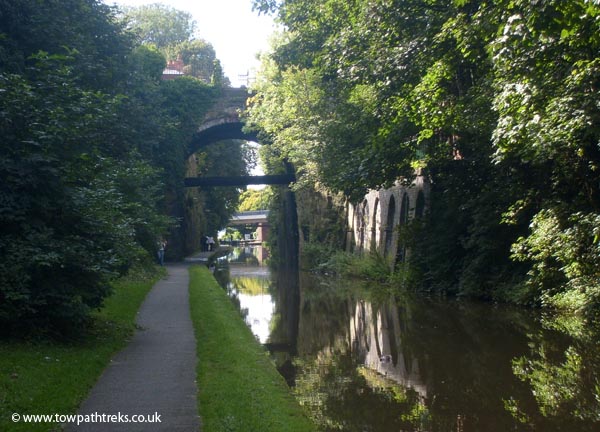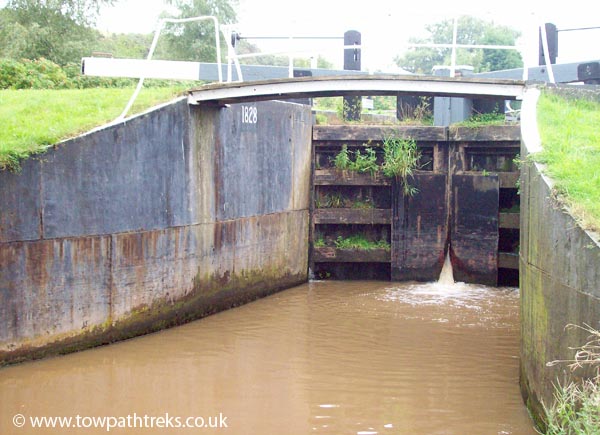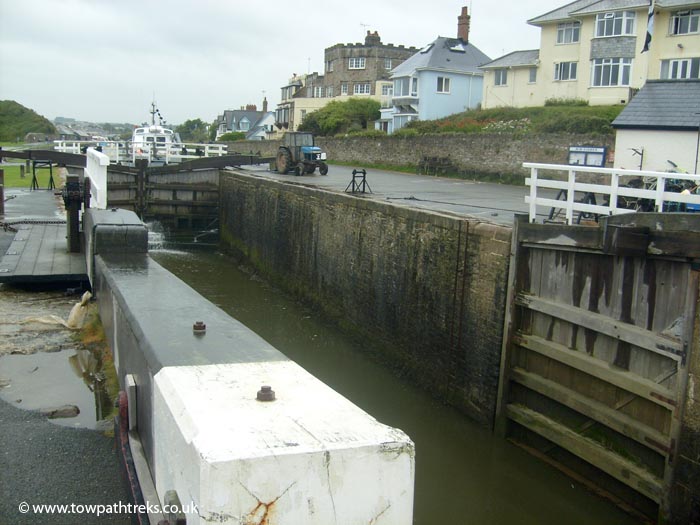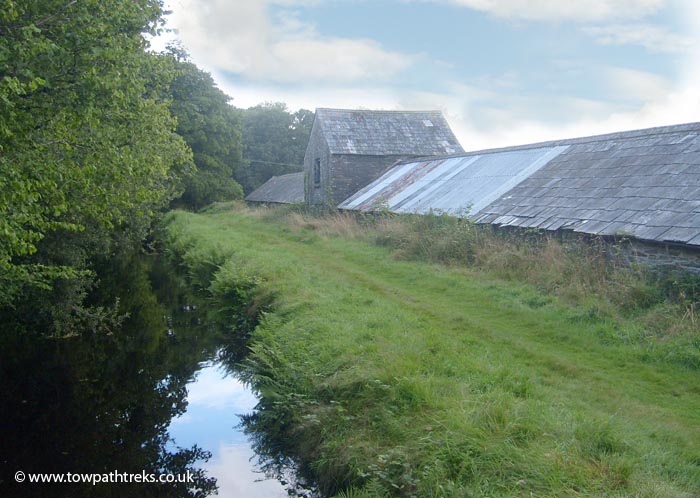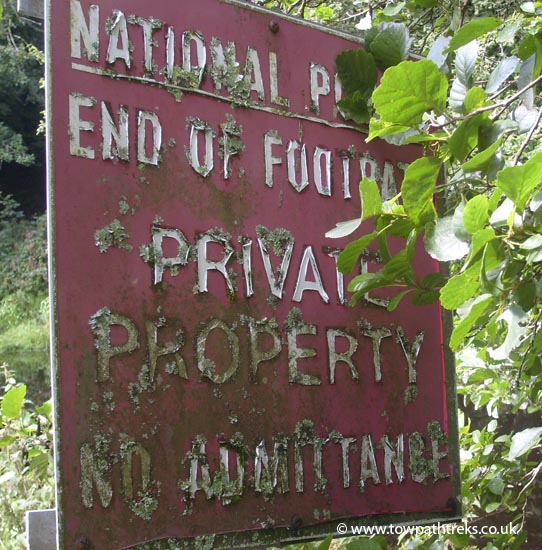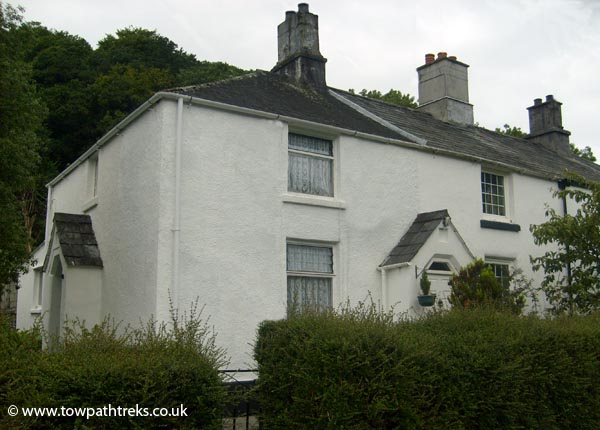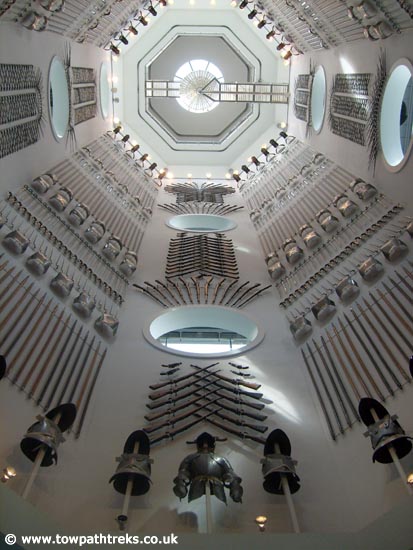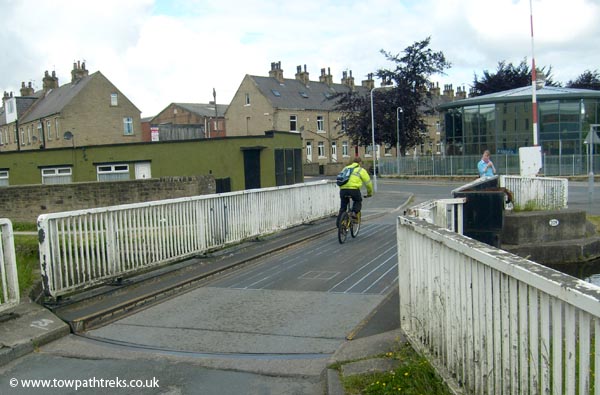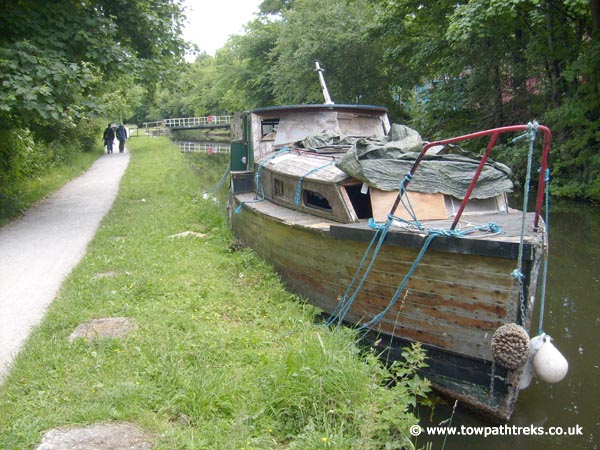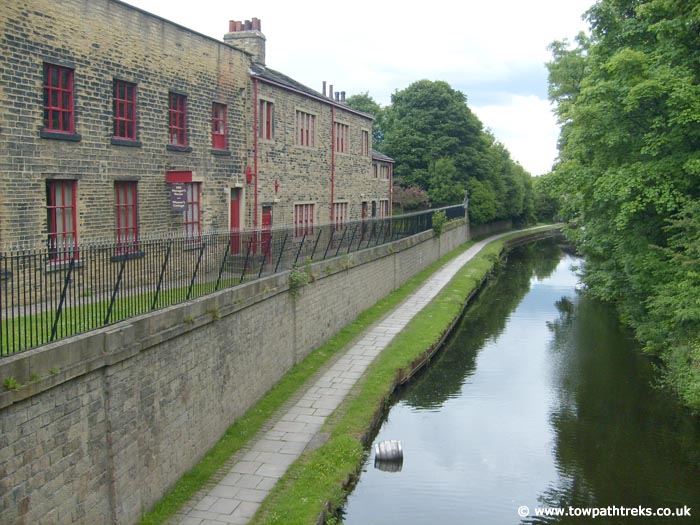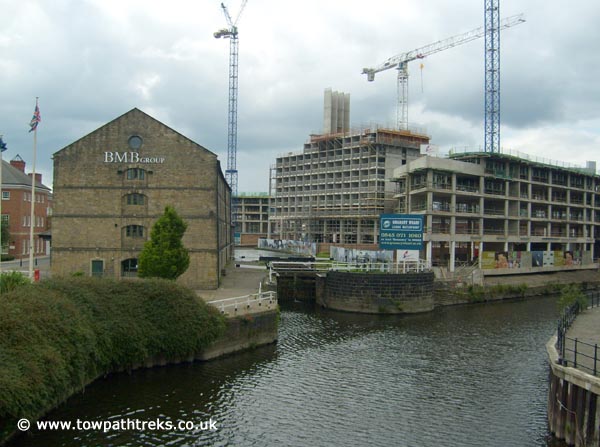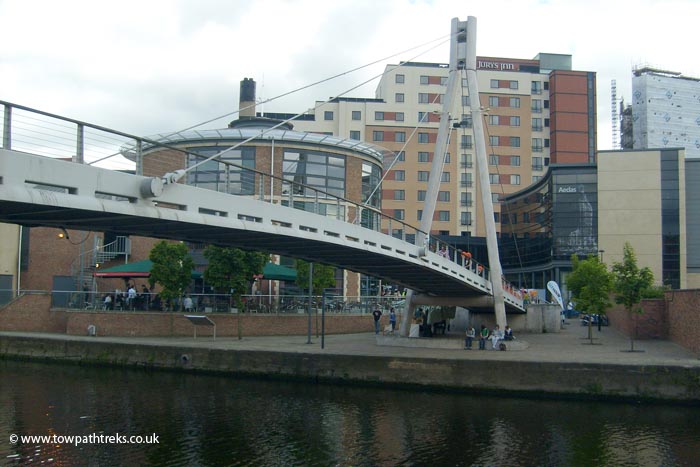Last time I was in London we walked from the western entrance of Islington tunnel on the Regent’s Canal to Camden Lock and then back to the Canal Museum. This time I planned to walk from Limehouse Basin, formerly Regents Canal Dock, to eastern side of the Islington Tunnel and then over the top to the other side.
To get to Limehouse I had planned to take the DLR from Bank underground station to Limehouse station. But due to engineering work the DLR wasn’t running so we followed a trail of signs to find and catch the rail replacement bus. After a short bus ride past the Tower of London we guessed we were at Limehouse and got off the bus.
There are signs to the Regent’s Canal towpath and Limehouse Basin on Commercial Road. The towpath can be easily accessed from Commercial Road. Commercial Road Lock is the start of the Regents Canal; it locks the canal into the dock. Next to the lock is an information board. There are information boards along the canal giving history and explanation. These boards are very good despite the fact that quite a few have been defaced. The board by Commercial Road has something else; if you turn a handle you can hear a barge woman talking about her life on the canal.
We walked around the dock. It was quiet, just one boat was on the move, a street cleaner flicked dog turds into the water and a couple of live-aboards were doing the usual chores. The dock was once packed with working boats and alive with industry and trade. Now it is surrounded by luxury apartments, new buildings rather than converted warehouses. As with other places on the canal the modern apartment blocks look deserted. There must be hundreds of flats but no sign of a community.
On the eastern side of the basin is the rather anonymous start of the Limehouse or Lee Cut. This canal is older than the Regents and links the Thames (via Limehouse basin since 1968) to the River Lee.
On the opposite side of the basin to the Commercial Road Lock is Limehouse Ship Lock. This lock links the dock to the River Thames. There are plenty of walks around here with the Thames Path passing by.
Back at Commercial Road Lock. The lock, like the others, is duel. There are two locks side by side with one having been weir-ed. The weir-ed lock has its gates removed and means that the canal will regulate its level. The weirs mean there is no need for lock keepers to monitor the water levels. Luckily the lock keepers houses remain.
With the dock and the lock behind us we set off for Islington. Salmon Lane Lock is not far from Commercial Road Lock. There is handsome set of lockside houses besides Salmon Lane Lock. Its windows are barred but the loud music coming from inside suggests it’s somebody’s home.
There is little left of the industry that once surrounded this canal. There is a lone chimney with no mill or factory to go with it. On the right is an old warehouse once rented by Doctor Barnardo to be used as a home for his ragged boys. Opposite are blocks of new apartments, some still under construction besides Johnson’s Lock.
At Mile End there are two brick bridges before Mile End Lock. The lock keepers cottage has a very modern extension. It is one of those things that will divide opinion. It means the lock keepers house is well maintained and still in use which has t be a good thing but how will it look in 10 or 20 years? I can’t see it lasting as well as the original building.
The area was once known for its slums but now has Mile End Park instead. The park area reminded me of the Garden Festival Site in Liverpool. It must have looked good when it was opened and new but now, in February 2008, it was looking a bit run down. On the offside of the canal there are large blocks of new apartments or offices. Once again there is no sign of the people who live and work there. The old film of a horse drawn barge taking coal up the canal shows people waving at the camera from their back gardens, or stood on bridges. Where is this community now?
Next I spotted a pair of boundary posts. One has been broken off near its base. The other is leaning forward a bit and has some spray paint on it. It is possible to make out a few letters but I couldn’t tell what it said.
Had the weather been better and my shoes more comfortable we would have walked along the Hertford Union Canal which joins the Regents Canal just before Victoria Park. The canal is only a mile and a quarter long, linking up with the Lee Navigation. It was never successful as a commercial waterway. Note the stop lock at the junction to control the trade and water.
The towpath is popular with runners and cyclists. Not all the bikers have taken on board the Two Tings message so keep your wits about you.
At Old Ford Lock there are some canal buildings that could be stables. A police horse was patrolling Victoria Park and as I ducked under the next bridge I realised the canal horses must have been short as well as strong.
Approaching Bethnal Green the canals surroundings become a bit more urban. There is a large gas holder and an interesting archway on the offside. Coming into town and the shopping centre there are signs that the area has seen some of the regeneration that the rest of the canal has. It’s not long before there are more luxury apartment blocks. Who lives in them?! The brand new buildings make the old brick bridges look out of place. There is a new railway bridge over the canal before Kingsland Basin. The bridges on this section have sign posts telling you not only the names of the bridges but the walking time in between them. This canal has very good signage and a lot is done to promote the use of the towpath.
After Sturts Lock there are two large basins, Wenlock Basin and City Road Basin. While passers-by took photos of a narrow boat going through the next lock I was more impressed by the 1960s Norman moored opposite City Road Basin. At first I thought it was a Norman 25 but it had a sun deck at the back which would make it longer. It was in a bit of a sorry state but it was nice to see a Norman on the Regent’s Canal. Next to the Norman was another information board with a handle to wind. This time it was a lock keeper’s voice telling us about his life on the canal.
Past the lock and through a bridge and we were at the eastern portal of the Islington Tunnel. It’s tempting to try to see down the tunnel but I just held my camera out to see if I could photo the light at the other end.
There is no towpath through the tunnel so horses were taken over the top.
We left the canal and headed up hill into Islington. We stopped off at an antiques market where I bought some postcards of Southport and Liverpool. The postcard of the Pierhead might show the wall that was recently uncovered by the canal link excavations. On top of the tunnel there are shops, bars, restaurants as some very nice houses. There are some blue signposts showing the way to the other side of the tunnel but these signs seem to stop around Sainsbury’s. While we were stood looking at the A-Z wondering where to go next a passing local asked if we were looking for the canal! How did he guess? He complained about the lack of signs and pointed us in the right direction. Through a housing estate and down Muriel Street and there was the canal again, emerging from beneath us. It’s easy to get back onto the towpath at the tunnel. With weary feet and legs we walked to the next bridge and left the canal to walk back to Kings Cross to buy sandwiches which we ate at the British Library.
I enjoyed this walk. I wish I had worn my trainers rather than my Royal Mail boots. The towpath is good throughout and busy with runners and cyclists. The Regents Canal has excellent information boards and the audio feature is a great idea. It is a bit of a shame that there are few historical buildings along the route. Unlike Blackburn or Burnley all trace of the past has been replaced by new buildings. The canal has retained its lock keeper cottages and the one at Mile End Lock has been brought into the 21st Century.
Given the choice I would pick to walk through Regents Park rather than Bethnal Green. Limehouse Basin would be worth visiting as part of a River Thames walk. The Regents Canal is a good example of how canals can bring wealth and regeneration to areas but could also be a warning about soul-less developments.




